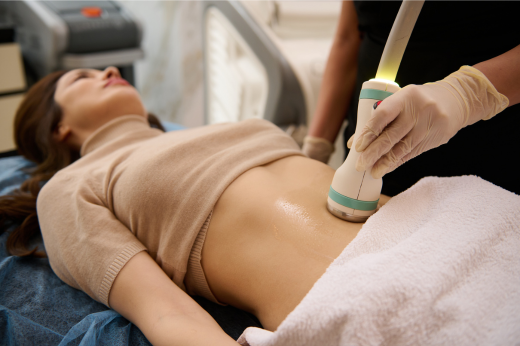
Dramatic weight loss can be followed by unpleasant aftereffects like sagging and loss of skin. A substantial amount of weight loss due to surgical procedures and lifestyle modification can negatively impact your skin's elasticity. Body contouring procedures followed by major weight loss can eliminate excess sagging skin and fat while improving the shape of the underlying supportive tissue. The result is a better-proportioned appearance with smoother contours. There are several body contouring procedures, both surgical and nonsurgical.
If you suffer from sagging skin, consult your doctor to discuss your goals and expectations from the body contouring procedure and which technique suits you best. Read on to learn everything about body contouring.
Body contouring, or body sculpting, is a medical or surgical procedure that aims to reshape an area of your body. It may involve nonsurgical and surgical methods to remove stubborn excess fat, eliminate excess loose skin, and reshape the affected area. Remember that body contouring may not help you lose weight. Instead, it helps shape the body and address areas where weight loss isn't effective.
Body contouring can target most areas in your body, including:
Depending on the technique, there are two main types of body contouring procedures, namely:
These are minimally invasive procedures with shorter recovery periods and minimal complications. These are of several types, including:
These invasive procedures may require cutting and suturing with longer recovery time. Options may include:
Body contouring is often used when other conservative options like diet and exercise aren't making a difference.
You will be referred to a plastic surgeon who will evaluate the area of your body that requires contouring. Remember to discuss the following at your first appointment:
You are expected to sign a consent form before going for the procedure. Your doctor will discuss the anesthetic options with you and take photos to determine the difference in appearance after the contouring.
Depending on the type of body contouring procedure being done, your doctor may advise you to:
The procedure may differ based on the type of body contouring. These may include the following:
These cosmetic surgeries occur in a clinic or hospital setup and last 45 minutes to several hours.
Your doctor will:
These are minimally invasive procedures that can be performed in a clinical setup. Each session may take around 30 to 45 minutes.
Your doctor will:
OR
You may require several sessions to achieve the desired results.
You may go home the same day after the body contouring procedure, whether a surgical or nonsurgical method is opted for. For surgical procedures, you may have a thin tube near your incision to drain fluid and prevent swelling.
Your doctor may recommend the following recovery instructions:
Body contouring procedures are gaining traction due to the following benefits:
Recovery after body contouring depends on the type of procedure opted for. Surgical options can take weeks to months, depending on the size of the incision and the targeted area. Nonsurgical options have a much shorter recovery period. You can often return to work and other activities immediately after the treatment.
Body contouring is an innovative procedure that helps eliminate excess fat and shape areas of your body. These are useful when other conservative options like diet and exercise are insufficient. Consult your doctor to discuss several body contouring options like surgical methods (liposuction) or nonsurgical methods (lipolysis), depending on the targeted areas of your body and your expectations. Body contouring procedures promise smoother, younger-looking skin and a well-toned and sculpted body. This can improve your overall quality of life.